“We should run the 50K in December?”
“Yeah! Doesn’t feel that scary though?”
“50 mile then?”
“Deal.”
And so it was, back in July, that Ben, Robert and I signed up for our first ultramarathon. The North Face 50 Mile (80K) Endurance Challenge through Muir Woods and the headlands north of San Francisco. This kind of crazy tends to only come out at GGRC happy hours, but if we didn’t follow through on drunk commitments we’d never have any board nominees. 80K would be twice as far as I’ve ever run before. Oh, and also there are hills.
My first official weekend of training started the Saturday after my Yosemite trip, with a hard 30 aggregate kays as part of a 3-person 6-hour relay team, backed up with another 28 easy in the headlands the day after. That wasn’t smart. Laid me out for two weeks with a flair up of the foot problems I’d been having earlier in the year.
I had to be back on my feet late July for a Chipotle Trifecta with Mark, which I proceeded to DNF after a single burrito. That wasn’t injury; just too much food for me. Amazingly he went on to finish, as far we know the only person in the world to do so.
Next up was pacing Sarah at the Santa Rosa Marathon late August. My goal: get through it with good nutrition and no injuries. Mission successful. In the month leading up to it I never topped 50K in a week, but it was a flat course and a slower pace for me. I had a lot of fun rolling around with friends and posing for all the race photographers.

After a precautionary week off, I started my lead up in September. The training plan was simple: back-to-back long runs on the weekend, track on Wednesday, easy runs up hills for the rest. Month one was cautious. Longest run was 22K, with easy Saturday runs rather than a proper double. October was all work. Every week had at least a 30K, with a few 20K supporting doubles.
My favourite was a weekend away with about ten friends in the Pinnacles National Park. Over 55K of gorgeous trails, including a summit of North Chalone Peak with Erica.

November was lighter, and I was having to take most of the week off so that my feet would recover for the weekends. I was starting to worry, but a strong 55K final weekend culminated in a PR up the final Coastal Trail climb to the round-a-bout — the first time I’ve actually run the whole thing without walking.
Aside from an easy Tennesse Valley to Muir Beach loop, I took my two week taper aggressively. Which is to say, I didn’t run at all. I wouldn’t necessarily recommend that, but I felt like I needed it both physically and mentally.
Overall, I was pretty happy with my weekend long runs but would have liked a lot more consistency during the week. My feet just weren’t up to it though. I’m planning on taking the rest of the winter off to recover. It could have been worse: by this time Robert had dropped back to the 50K, and Ben was nursing a sprained ankle and had dropped out completely. So I’m in this thing by myself.
The Race
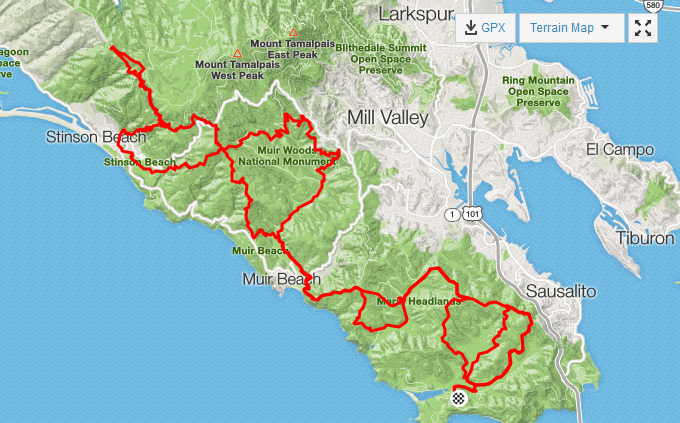

These things start early. 2:40 wakeup to catch a 3:30 shuttle to arrive at 4:15 for a 5:00 start. The sun won’t be up for another two hours. To my surprise and delight, the start area had a number of fires and gas heaters. I huddled under one with who I presume were some French pros who had flown in for the event. They weren’t speaking English so I’m not sure, but they looked the part.
Sunrise at the top of Miwok was a spectacular precursor to the sights to follow during the day. I can’t emphasise enough just how beautiful this race is, and the weather was perfect. Not a cloud in the sky. Running up Coastal to the McKennan Gulch aid station a fellow runner remarked that it felt like running through a Strava ad. “Actually,” another corrected, “I’m pretty sure this trail is in one.”
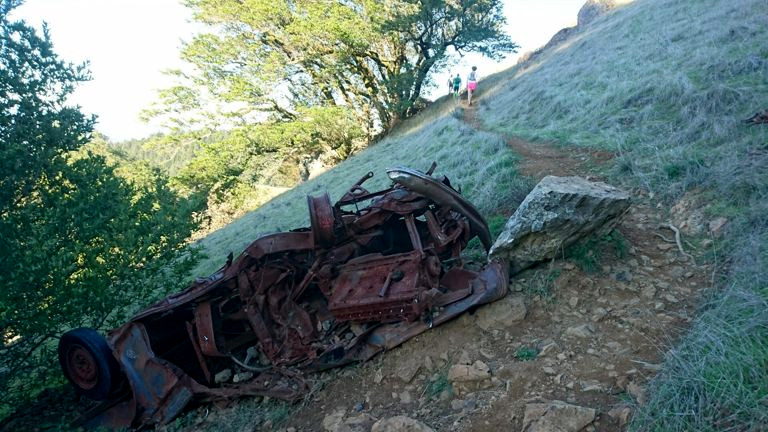
The first half of the race was uneventful, with the wonderful exception of finding Meredith at Tennessee Valley. Seeing her finish Western States back in May was probably what got me thinking I should try an ultra. She’s a constant source of inspiration, and the fact that she was out volunteering in the cold early Saturday morning only reinforces this.
The third quarter wasn’t fun. My footing was getting sloppy on the root-filled single track through Muir Woods, and I took one face plant coming down Matt Davis and a number of other big trips. I was beyond my known limits and hurting, but not close enough to the end that I knew I could finish.
From Dipsea stairs onwards I was in survival mode up the climbs. Walking as fast as I could was still slower than most other people were hiking. I was still able to run the flats and descents, though the latter in particular were somewhat painful.
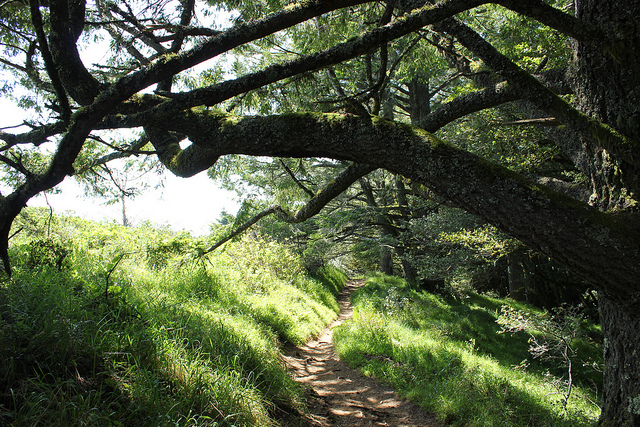
I thought I had previously run the section from the top of Dipsea back to Muir Beach, but was completely wrong. Rather than continue down the Deer Park fire road as I’d done in training, it turns left and heads down Ben Johnson followed by a pinchy climb up to the Redwood Trail. Need to get better at reading maps!
Things started looking up along the Sun and Redwood Creek trails, not coincidentally the flattest sections of the race. I was mentally preparing for a climb up Miwok, for no other reason than that’s the way I normally turn off Redwood Creek and my brain was softening up. Rolling straight past that turn off was a definite weight off my shoulders. Once I got back to Muir Beach, at about the 65K mark, I knew I was going to finish. There was still a long way, but it was all on trails I’ve run countless times before.
My watch ran out of battery just after Cardiac after six and a half hours. That was expected. I immediately stopped it and dropped out of GPS tracking so I’d still have the time. Though I’d planned to do this I hadn’t tested it. Thankfully it lasted through to the end.
Until now it was my feet giving me the most trouble. The steep ascent up Coastal then Coyote Ridge (those false summits never get any easier…), then the matching descent down Fox Trail finally trashed my legs as well.
Coming into Tennesse Valley for the second time (Meredith was still there!) I prepared for the final climb up Marincello with a PB&J, a slice of Orange, and a quick stretch. I wish it had helped. Everyone walked past me on that climb.
It’s oddly specific, but I remember leaving the final aid station at Alta at 3:17. Just under three mile descent to the finish. Finishing before 4:00 would be well under my goal time. Just thirty minutes of pain I told myself. That’s it. Get it done. It’s going to hurt regardless. No need to hold anything back. I found my zone and put the hammer down. This was my Friday tempo run. The last rep at track. It’s supposed to hurt. No walking. Keep pushing. Even up the final hill to the finish, keep grinding. Pass back everyone who got me on Marincello.
Twenty four minutes later I crossed the finish line. Fifty trail miles, 3600m of elevation over eight climbs, in a final time of 10:38:56.
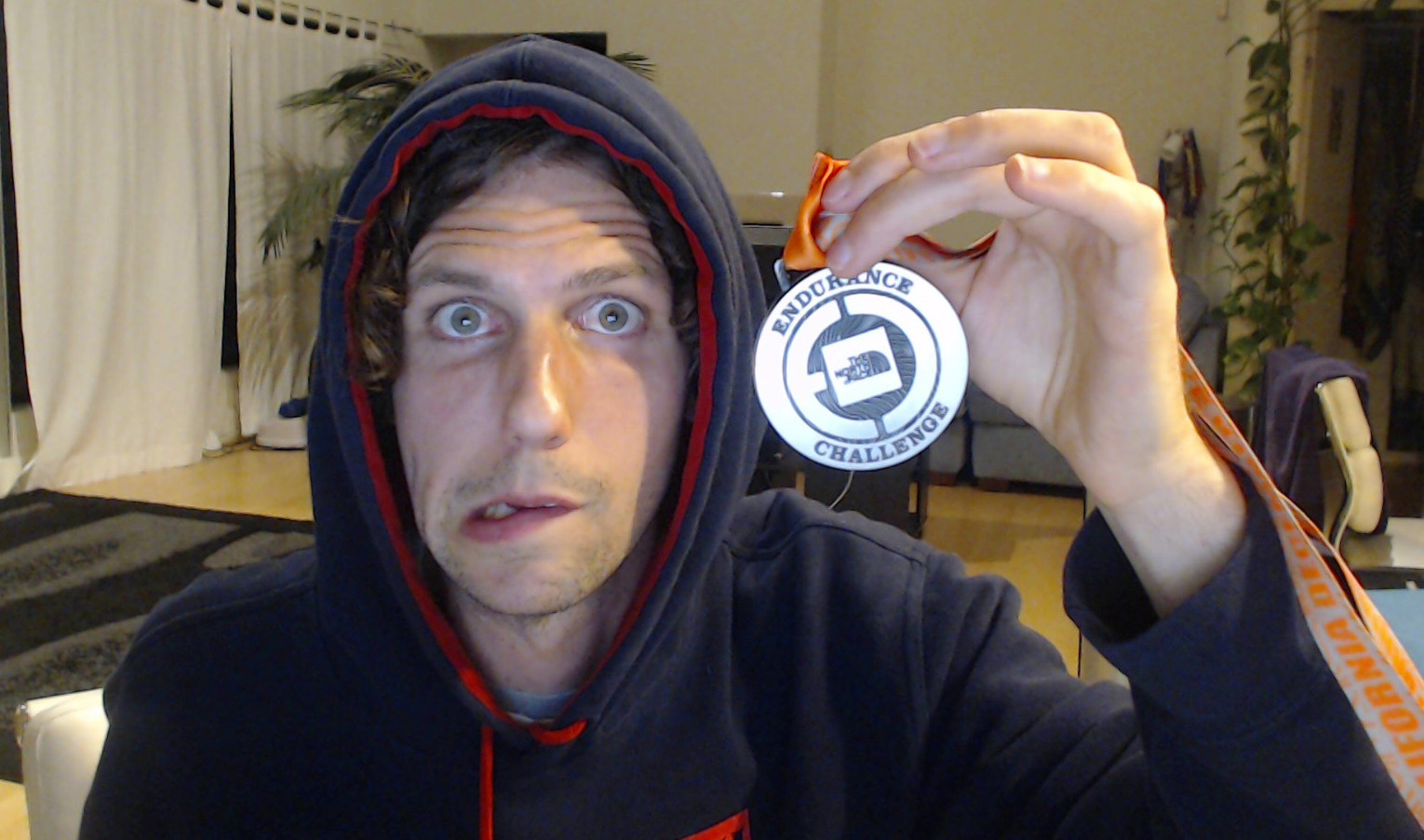
Aftermath
After sitting in the sun for a while I had to face my next challenge: get home. First I had to walk a few hundred metres to the shuttle bus. I just wanted someone to carry me. Every 20 steps I had to stop to let the fire in my lower calves and feet subside, shivering in the cold. Getting to the pickup point I collapsed onto the curb and finally all the emotion and pain started leaking out my eyes.
There was a major traffic jam getting out of Marin. One way was closed due to construction, the other was through a long one way tunnel that everyone needed to wait their turn for. The school bus shuttles are designed for kids and don’t have any leg room, so I kept shifting around to spare my legs. Eventually I found the perfect spot that triggered an intense wave of nausea, giving me an excuse to lie down in the aisle rather than throw up all over my compatriots. Turned out it was far better for my legs too, so I just stayed there for the rest of the ride.
Once I got back to my car and my phone (I could now walk without stopping — just), I called Jodie.
“I did it! I might need help getting up the stairs.”
“Can I film you? I’m going to film you. It’ll be hilarious.”
Lucky for me, and unlucky for all of you, I’d recovered enough to passably walk by the time I got home. “This wouldn’t be a good video” she said.
Reflection
Not knowing what to expect, my A-goal was 12 hours. I’d run 38K easy in just under 5 on a wet training run that included climbing the Dipsea stairs, so I doubled that and added two for lounging at aid stations and unexpected problems. That was part of my race plan I’m happy with: I didn’t rush through aid stations, and took my time to eat and recover. I’m estactic I finished under 11. Since my watch died I don’t know how good my estimate was, but 10 hours of running and 40 minutes at aid stations feels about right.
Critically though, there were no unknown problems. In fact, I’m shocked at everything that didn’t go wrong. No blisters, chafing, cramps, stiches, headaches, knee problems, muscle issues, sunburn, insect bites, nausea. My feet were worse than I was hoping, but still probably not quite as bad as my big day in Yosemite earlier in the year. This time was harder to deal with though since I had to run! Even the fall I took was mild. I have a minor bruise on my ribs and a mild graze on my right knee but that’s it, and I only noticed those after the race.
My legs and feet are sore the day after, but neither feels injured. The roof of my mouth hurts when I eat, such that I can only take a bite or two at a time, but that’s apparently pretty normal. My guess was the large amount of sugar I ate, but the internet claims that just ten hours of heavy mouth breathing can cause irritation also.
On pacing, I came through half way in 4:30 but hadn’t felt like I’d rushed it. Given how trashed my legs were at the end, I want to experiment more with where to slow down. My climbs were already pretty slow, though I could walk more of them. I could also descend slower. I was holding back, but possibly more restraint is warranted.
My nutrition plan combined Margarita shot blocks and roast potatoes, though I wasn’t going to be too strict about it. “Never try anything you haven’t tried in training” is the rule, but as my first race at this distance I was more interested in establishing a base case even if it went terribly. So my actual plan was shot blocks and potatoes while running to keep up minimum calories, combined with whatever I felt like at aid stations. Unfortunately the potato wasn’t as appetizing as I’d found it in training, and I wasn’t able to eat as much of it as planned. To compensate though, I tried all manner of things from the aid buffett. Mountain Dew and Skittles was just what I felt like at McKennan Gulch, the only time that has been true in the last decade. I settled into a routine of oranges and PB&J sandwiches for the last few stops which felt good. The latter needs water to wash down. Suprisingly, I wasn’t all over the potato chips. I’d like to try hummus and olives in the future.

As it wasn’t that hot, hydration was pretty simple. Using a Mountain Hardware Vest (on extended loan from David, thank you sir) with a 1L Hydrapack Reservoir I repeated a routine of Nuun tablet in bladder, drink half, top up with water, finish. Drink water at aid stations. I think I only went through two cycles though. In hotter conditions I don’t think this would be sufficient. They had Tailwind at every station, which is something I’d like to experiment with.
This was the final outing of my Salomon Sense Pro 2 shoes, which now have over 600K on them and are starting to wear. They gave me blisters on the first couple of outings, but have been fine since I wore them in. I taped up my big and little toes anyways, just in case. Given my feet were the limiting factor in this race, I want to experiment with some different shoes. I found a gateway pair of Hokas the other week that I didn’t immediately hate, so am going to give them a try.
I’m not yet convinced I want to do something this long again, but I’m definitely still keen to keep trail running. Next time I want to drop back down to 50K. It’s long enough to try addressing some of the problems and challenges I’m motivated to fix, without being crushing at my current level of fitness. I’m glad I signed up for the longer distance though. I think if I’d done a 50K it would have had many of the same issues, but given it didn’t really start getting difficult until 40K I would have just chalked it up to “of course it’s going to be hard” and wouldn’t have reflected on what to change up. Having now seen how decisions extrapolate out to a longer distance, I know what I want to learn on a shorter course before thinking about a repeat long run.
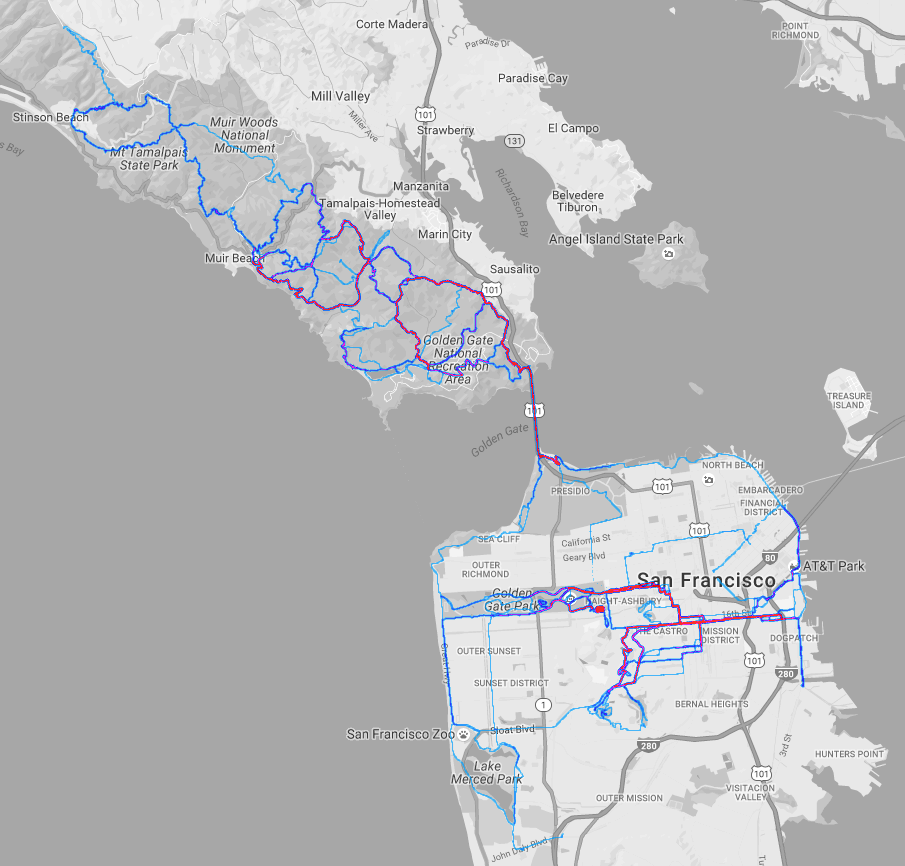
In particular, a big thank you to David who kept me company on many a long trail and has been a never ending source of support, advice, and encouragement. And also to Ben — ultimately this is your fault. To everyone who makes GGRC everything that it is, my life wouldn’t be the same without you all.
Follow me on Strava if you’re into that sort of thing.